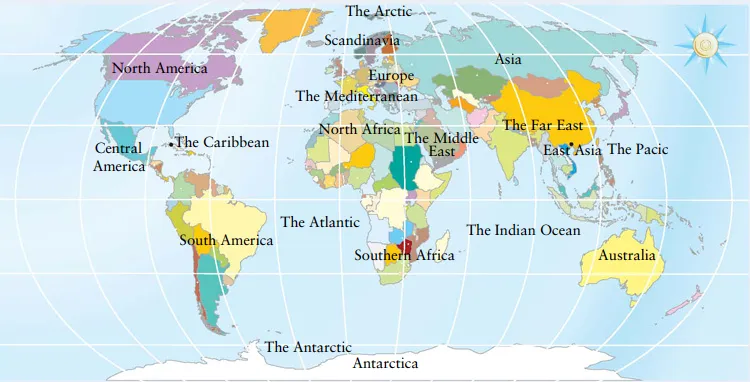A. Using ‘the’
Most names of countries are used without ‘the’, but some countries and other names have ‘the’
before them, e.g. the United States / the US(A), the United Kingdom / the UK, the Netherlands,the Philippines, the United Arab Emirates / the UAE, the European Union / the EU, the Commonwealth.
B. Adjectives referring to people, countries and languag
es
- With -ish: British Irish Flemish Polish Danish Turkish Spanish
- With -(i) an: Canadian Brazilian Latvian Korean Russian Australian
- With -ese: Japanese Chinese Vietnamese Portuguese Maltese Taiwanese
- With -i: Israeli Iraqi Kuwaiti Pakistani Yemeni Bangladeshi
- With -ic: Icelandic Arabic Slavonic
Some adjectives are worth learning separately, e.g. Swiss, Thai, Greek, Dutch, Cypriot.
C. Nationalities
Some nationalities and cultural identities have nouns for referring to people, e.g. a Finn, a Swede, a
Turk, a Spaniard, a Dane, a Briton, an Arab, a Pole. For most nationalities we can use the adjective as
a noun, e.g. a German, an Italian, a Belgian, a Catalan, a Greek, an African,
a European. Some need woman/ man/ person added to them (you can’t say ‘a Dutch’), so if in doubt,
use them, e.g. a Dutch man, a French woman, an Irish person, an Icelandic man.
D. World regions

E. Regional groups and ethnic groups
People belong to ethnic groups and regional groups such as African-Caribbean, Asian, Latin
American, North African, Scandinavian, Southern African, European, Arabic. These can be used
as countable nouns or as adjectives.
Many Europeans enjoy travelling to the Far East to experience Asian cultures.
Arabic culture extends across a vast region of North Africa and the Middle East.
People speak dialects as well as languages. Everyone has a native language or first language
(sometimes called mother tongue); many have second and third languages. Some people are
expert in more than one language and are bilingual or multilingual. People who only know one
language are monolingual.
|


Bình luận